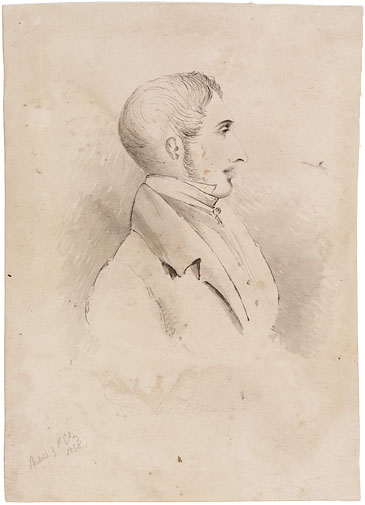
Robert FitzRoy, c. 1835
Philip Gidley King, jnr
Ink and wash
Purchased, King Estate, 1933
ML C767, p. 69
Caption: Robert FitzRoy (1805–1865) was on the first Beagle voyage and was appointed commander of the second. His surveys were acclaimed and he later became Governor of New Zealand. The synoptic chart, a chart showing weather conditions across an area at any given time, was his invention. He committed suicide in April 1865.
THE VOYAGE OF A LIFETIME, 1831–36
The voyage of the Beagle has been by far the most important event in my life, and has determined my whole career
Charles Darwin, 1876
The purpose of the Beagle voyage, under Captain Robert FitzRoy, was to chart the coasts of South America and to undertake meteorological observations at a number of places around the globe: the Galapagos, Tahiti, New Zealand, Australia, Cocos (Keeling) Islands and Mauritius.
FitzRoy felt the need for ‘some well-educated and scientific person’ as a companion. The young man would have to be a gentleman. He would have no duties on board ship but would collect specimens and think. The 22-year-old Charles Darwin had just come down from Cambridge enthused by natural history. He was not the first, or even the second, choice but he was — as no-one could possibly foresee — an inspired one.
Darwin worked in the small poop cabin. He shared this with the Australian, Philip Gidley King, jnr (1817–1904), midshipman; John Lort Stokes (1812–1885), mate and assistant surveyor; a chart table and nearly 300 reference books.











